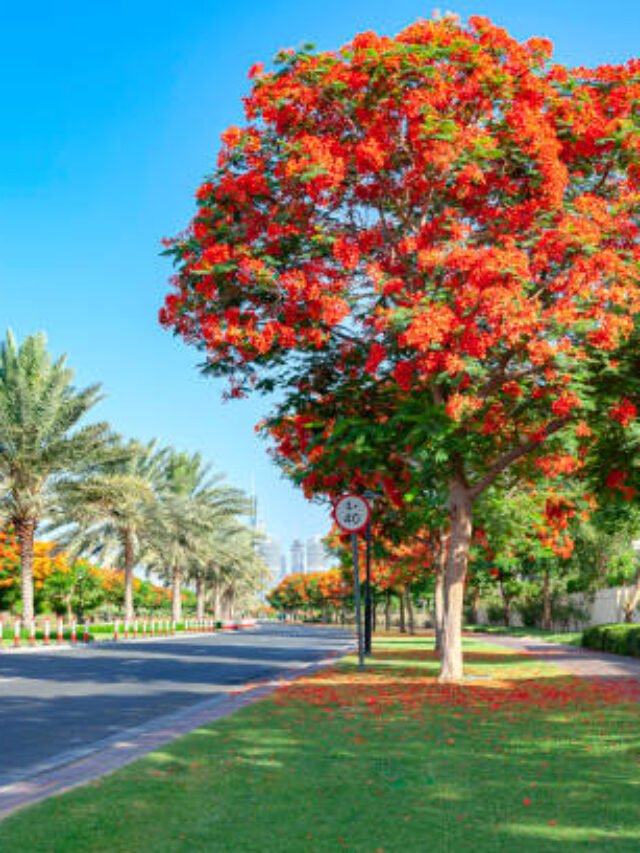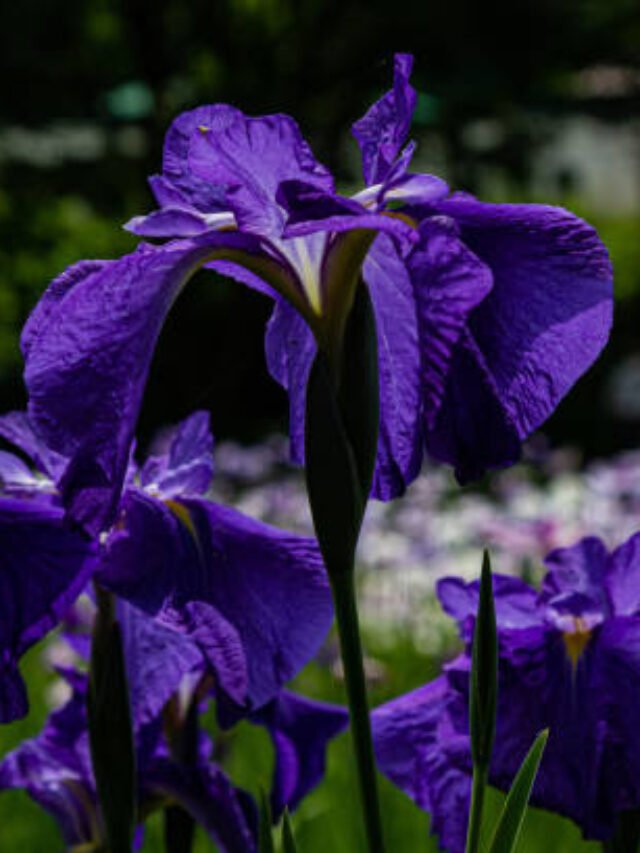विरंजन विरंजन ऐसी प्रक्रिया है, जिसमें शैवालों पर रंग श्वेत होने से प्रकाश संश्लेषण की क्रिया नहीं हो पाती और शैवाल समाप्त होने लगते हैं और शैवालों की कमी के कारण प्रवाल जीव मरने लगते हैं। चूंकि शैवाल ही प्रवालों के भोजन होते हैं। अतः शैवालों के अभाव के क्षेत्र में प्रवाल विरंजन की क्रिया तीव्रता से होती है।
प्रवाल विरंजन के लिए ग्लोबल वार्मिंग को मुख्य रूप से उत्तरदायी माना जा रहा है। विश्व के तापमान में औसत वृद्धि के कारण 60 से अधिक देशों के उष्णकटिबंधीय सागरों में वृहद पैमाने पर प्रवाल विरंजन की घटना हुई है, जिससे प्रवालों की सामूहिक मृत्यु हुई है और प्रवाल विनाश की स्थिति उत्पन्न हो गई है। यह स्थिति 1998 में वैज्ञानिकों द्वारा स्पष्ट की गई।
1998 में केनिया तट के पास तथा हिंद महासागर में लक्ष्यद्वीप, मालदीप एवं अंडमान निकोबार में 70% से अधिक प्रवालों की मृत्यु हो गई। हालांकि प्रवाल विरंजन की घटना का अवलोकन 1919 में ही अल्फ्रेड मेयर द्वारा कर लिया गया था। 1997-98 में महासागरीय जल के तापमान में औसत 2°C की वृद्धि होने से प्रवाल विरंजन की क्रिया हुई थी। सामान्यतः महासागरों के तापमान में जब औसत से अधिक वृद्धि हो जाती है तो शैवाल का रंग सफेद हो जाता है। और हरे रंग के बिना शैवाल प्रकाश संश्लेषण नहीं कर पाते और इनकी वृद्धि रुक जाती है। शैवालों के अभाव में प्रवालों को भोजन की कमी होने लगती है और प्रवालों की मृत्यु होने लगती है।
प्रवाल विरंजन के कारण :
- भूमंडलीय तापीय वृद्धि – इसे सर्वप्रमुख कारण माना जाता है। Global Coral Reef Alliance (GCRA) के अनुसार, प्रवाल विरंजन की स्थिति तभी उत्पन्न हुई है, जब ग्रीष्मकाल में गर्म होने का तापमान सामान्य से 1°C अधिक रहता है।
- एलनिनो प्रभाव – गर्म एलनिनो का अवस्था में शैवालों की मृत्यु हो जाती है। 1998 में एलनिनो अधिक प्रभावकारी था। 1983, 1987, 1998 में जब प्रवाल विरंजन अधिक हुआ। एलनीनो का प्रभाव अधिक रहा है।
- संक्रामक रोगों के कारण – ब्लैक – बैंडरोग कोरल प्लेग एस्पर जिलोसिस, ह्रिट बैण्ड रोग के कारण महासागरों में प्रवालों की मृत्यु हो जाती है।
- समुद्री जल प्रदूषण
- कोरल क्षेत्रों का खनन एवं दोहन
- समुद्र वनों का विनाश
विश्व में प्रवाल विरंजन के प्रमुख क्षेत्र एवं घटना :
- 1997 और 1998 में बहरीन, मालद्वीप, श्रीलंका, सिंगापुर तथा तंजानिया के छिछले सागरों में 95% प्रवालों पर विरंजन का प्रभाव हुआ था। यह स्थिति कैटास्ट्रफिक विरंजन कहलाता है। जब 70% प्रवाल प्रभावित हो जाए।
- 1979 में केनिया, सेचलीस, थाईलैंड तथा वियतनाम के सागरीय भागों में 50 से 70% तक प्रवालों पर विरंजन का प्रभाव पड़ा था। यह स्थिति प्रथम विरंजन कहलाती है।
- 1977 से 98 में ही अंडमान एवं निकोबार द्वीप में बड़े पैमाने पर प्रवाल विरंजन की घटना हुई थी। यहां अंडमान के चारों और प्रवालों का सामूहिक विरंजन हो गया था। निकोबार द्वीप के प्रवालों का 30 से 70% भाग का विरंजन हो गया था। इस विरंजन का मूल कारण 1998 में अंडमान सागर के तापमान में 2 डिग्री सेल्सियस तक की वृद्धि रही है।
भारतीय समुद्र विज्ञान संस्थान गोवा द्वारा किए गए सर्वेक्षण में लक्ष्यदीप में कबारती तथा कदामत द्वीपों के प्रवालों के विरंजन का कारण बैक्टीरिपल रोग तथा सागरीय जल के तापमान में वृद्धि है। कच्छ की खाड़ी में प्रवालों का विरंजन स्थलीय मलवा के निक्षेप के कारण होता है। क्योंकि मलवा से प्रवालों के मुंह बंद हो जाते हैं।
कोरल संरचना के क्षेत्र विश्व के प्रमुख जैव विविधता एवं पारिस्थितिक तंत्र के क्षेत्र है, जिसका संरक्षण आवश्यक है। अतः कोरल क्षेत्रों को विपरीत रूप से प्रभावित करने वाले कारण पर नियंत्रण किया जाना चाहिए। हाल में ही प्रशांत महासागर की प्रवाल क्षेत्रों के नष्ट होने के प्रमाण मिले हैं जिसका कारण समुद्र में तापीय वृद्धि को माना जा रहा है।
Bleaching Bleaching is such a process, in which the process of photosynthesis does not take place due to whitening of the color on the algae and the algae begin to die and due to the lack of algae, the coral organisms start dying. Since algae are the food of corals. Therefore, in the area of absence of algae, the action of coral bleaching takes place rapidly.
Global warming is believed to be primarily responsible for coral bleaching. A rise in global average temperature has caused widespread coral bleaching in tropical oceans in more than 60 countries, resulting in the mass death of corals and a coral disaster. This situation was clarified by scientists in 1998.
In 1998, more than 70% of corals died off the coast of Kenya and in Lakshadweep, Maldives and Andaman Nicobar in the Indian Ocean. However, the phenomenon of coral bleaching was observed as early as 1919 by Alfred Meyer. In 1997-98, an increase in the temperature of ocean water by an average of 2°C caused coral bleaching. Generally, when the temperature of the oceans increases more than the average, the color of the algae becomes white. And without green color algae cannot photosynthesize and their growth stops. In the absence of algae, the corals begin to lack food and the corals begin to die.
Causes of coral Bleaching :
- Global warming – This is considered to be the most important reason. According to the Global Coral Reef Alliance (GCRA), coral bleaching has only occurred when summer warming is 1°C above normal.
- El Nino Effect – Algae die in warm El Nino conditions. El Nino was more dominant in 1998. In 1983, 1987, 1998 when coral bleaching occurred more. The effect of El Nino has been more.
- Due to infectious diseases – Black – band disease coral plague asper xylosis, Hrit band disease causes death of corals in the oceans.
- Sea water pollution
- Mining and Exploitation of Coral Areas
- Destruction of sea forests
Major areas and events of Coral Bleaching in the world :
- In 1997 and 1998, 95% of corals in the shallow seas of Bahrain, Maldives, Sri Lanka, Singapore and Tanzania were affected by bleaching. This condition is called catastrophic bleaching. When 70% of the coral is affected.
- In 1979, 50 to 70% of the corals in the oceanic parts of Kenya, Seychelles, Thailand and Vietnam were affected by bleaching. This condition is called first bleaching.
- In the year 1977 to 98, large scale coral bleaching incident took place in Andaman and Nicobar Islands. There was mass bleaching of corals around Andaman. 30 to 70% of the corals of the Nicobar Islands were bleached. The root cause of this bleaching has been an increase in the temperature of the Andaman Sea by up to 2 °C in 1998.
In a survey conducted by the Indian Institute of Oceanography, Goa, the reasons for the bleaching of corals in Kabarati & Kadamat islands in Lakshadweep are bacterial disease and increase in sea water temperature. The bleaching of corals in the Gulf of Kutch is due to the deposition of terrestrial debris. Because the mouths of corals get closed by debris.
Areas of coral formation are key areas of biodiversity and ecosystems in the world that require conservation. Therefore factors that adversely affect coral areas must be controlled. Recently, evidence has been found of the destruction of the coral areas of the Pacific Ocean, the reason for which is believed to be the thermal rise in the sea.




Pingback: प्रवाल संरचना I प्रवाल भित्ति की उत्पत्ति I प्रवाल भित्ति के प्रकार - Mountain Ratna